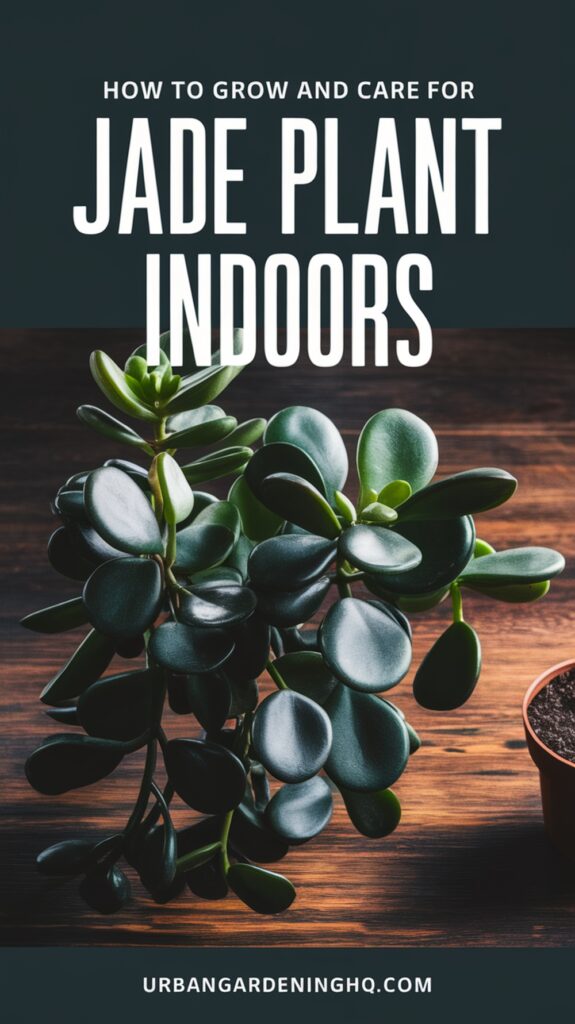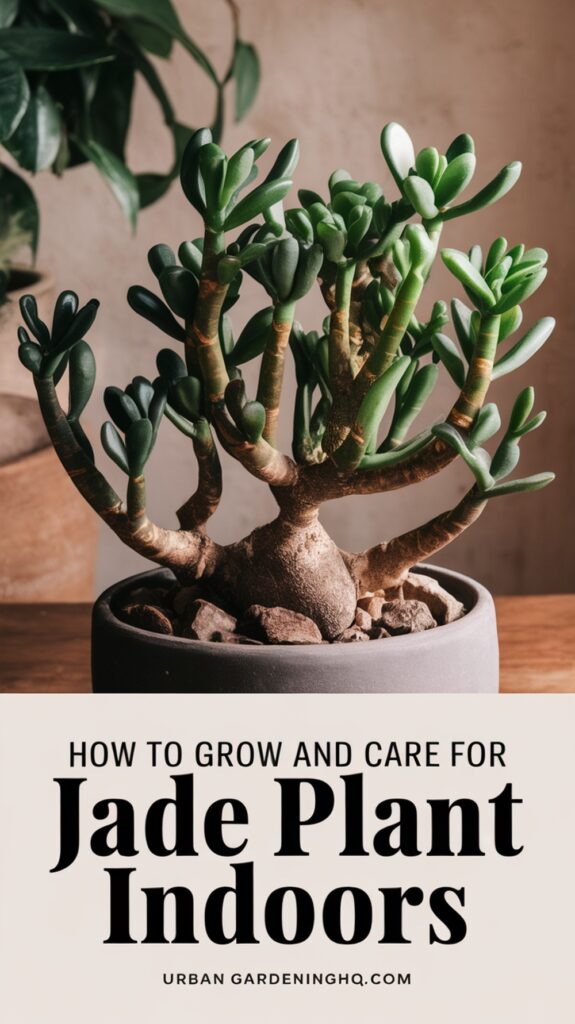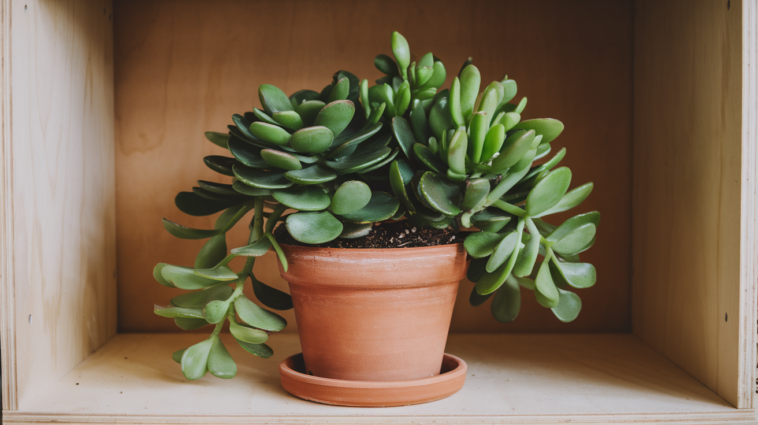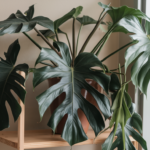I’m excited to share my knowledge on jade plant care with you. I’ll give you tips to keep your plant healthy and thriving. As a plant enthusiast, I’ve learned that anyone can be a successful plant owner with the right techniques.
In this guide, I’ll cover the basics of watering and pruning. I’ll also dive into more advanced topics like propagation and problem-solving. My goal is to help you create a thriving environment for your jade plant using effective care tips.
Meet the Beautiful Jade Plant: Your New Favorite Succulent

Exploring jade plants is exciting. They’re perfect for any home. Originating in South Africa’s Eastern Cape, they’re loved for indoor gardening. Their variety offers unique features and care needs.
Popular varieties like ‘Hummel’s Sunset’ and ‘Blue Bird’ are favorites. They range from compact to trailing, fitting any space. Jade plants are easy to care for, ideal for those with little time.
Origins and Natural Habitat
Jade plants come from South Africa’s Eastern Cape. They grow up to 3 feet tall in the wild. Indoors, they reach 1-2 feet. Knowing their natural habitat helps gardeners care for them better.
Popular Jade Plant Varieties
Here are some top jade plant varieties:
- ‘Hummel’s Sunset’: a compact variety with yellow-green leaves
- ‘Blue Bird’: a trailing variety with blue-green leaves
- ‘Gollum’: a variety with unique, finger-like leaves
Each variety has its own look and care needs. They’re perfect for adding variety to your indoor garden.
Why Jade Plants Make Perfect Houseplants
Jade plants are great for homes. They thrive indoors and purify the air. They’re perfect for any gardener, new or experienced.
Essential Light Requirements for Your Jade
Getting the right light for your jade plant is key. They love bright, indirect light, making them great for indoor spaces. Place your jade near an east- or west-facing window for the best light.
Stay away from direct sunlight to prevent leaf scorch. If you don’t have a sunny spot, grow lights can help. They’re great during winter when light is less.
Here are some tips for lighting your jade:
- Use a well-lit location, but avoid direct sunlight
- East- or west-facing windows are ideal for jade plants
- Consider using grow lights if natural light is limited
With the right light, your jade plant will flourish. Keep an eye on how it reacts to light and move it if needed. Your jade will soon become a stunning part of your home.
Watering Your Jade Plant Successfully

Watering your jade plant can be tricky, but with the right techniques, it can stay healthy. Finding the right balance is key to avoid overwatering. Overwatering can cause root rot and other problems. For more info on growing jade plants indoors, check out this resource.
To avoid overwatering, check the soil moisture by sticking your finger into it up to the first knuckle. If it feels dry, it’s time to water. Signs of overwatering include yellowing leaves, soft stems, and a soggy potting mix. Underwatering can cause leaves to shrivel and stems to become brittle.
Recognizing Watering Issues
- Yellowing leaves can be a sign of overwatering, while shriveled leaves may indicate underwatering.
- Soft stems can be a sign of overwatering, while brittle stems may indicate underwatering.
- A soggy potting mix can be a sign of overwatering, while a dry potting mix may indicate underwatering.
Adjust your watering based on the season. Water more often in spring and summer when the plant is growing. Water less in fall and winter when it’s dormant. Jade plants are relatively easy to care for, as noted on this website.
Soil and Potting Requirements
Choosing the right soil for your jade plant is key. You want a soil that drains well to avoid waterlogged soil and root rot. A mix of peat moss, perlite, and vermiculite is best. Adding a bit of sand or grit can also help with drainage.
Repot your jade plant every 2-3 years. This gives it fresh soil and room to grow. A high-quality mix for cacti and succulents is best. It has the right ingredients for good drainage.
Here are some important features of a good potting mix for jade plants:
- Good drainage to prevent waterlogged soil
- A balanced mix of peat moss, perlite, and vermiculite
- Optional additions of sand or grit to improve drainage
With the right soil and potting mix, your jade plant will flourish. Enjoy its beautiful, easy-to-care-for foliage for many years.
Temperature and Humidity Needs
To keep your jade plant happy, it’s key to know its temperature and humidity needs. Jade plants like daytime temperatures between 65-75°F (18-24°C). At night, they should not get colder than 55°F (13°C). This range helps them grow well and stay healthy.
Jade plants do well in average humidity but like it a bit drier. You can use a tray with water and pebbles or a humidifier to control humidity. This keeps the air around your jade plant right, helping it grow strong and avoiding problems.
Ideal Conditions
Here are some ideal conditions for your jade plant:
- Daytime temperature: 65-75°F (18-24°C)
- Nighttime temperature: no lower than 55°F (13°C)
- Humidity level: slightly dry, around 40-50%
Protecting from Draft and Cold
To keep your jade plant safe from cold and drafts, place it away from windows, doors, and air vents. This stops sudden changes in temperature and humidity. By keeping the right temperature and humidity, your jade plant will thrive.
| Temperature Range | Humidity Level | Plant Response |
|---|---|---|
| 65-75°F (18-24°C) | 40-50% | Optimal growth |
| Below 55°F (13°C) | Above 60% | Stress and possible damage |
Fertilizing Your Jade Plant for Optimal Growth
To help your jade plant grow well, choose the right fertilizer. In spring and summer, use a balanced, water-soluble fertilizer. But, make sure to dilute it to half the recommended amount to prevent root damage.
Here are some important tips for fertilizing your jade plant:
- Use a fertilizer made for cacti and succulents.
- Don’t fertilize in fall and winter when the plant is sleeping.
- Water your plant well before adding fertilizer to avoid burning the roots.
By following these guidelines and picking the right fertilizer, your jade plant will thrive. Always read the label and follow the instructions to get the best results.
Pruning and Shaping Techniques

As a jade plant owner, I’ve learned that pruning is key. It keeps the plant’s shape and encourages new growth. Prune your jade plant in the spring and summer when it’s growing. This helps it heal fast and lowers disease risk.
When pruning, make clean cuts. Use sharp, sterile tools to avoid spreading diseases. Cut just above a leaf node to encourage new growth. Also, remove dead or damaged leaves or stems to keep the plant healthy.
Pruning Tips
- Prune your jade plant during the spring and summer months
- Use sharp, sterile tools to make clean cuts
- Cut just above a leaf node to encourage new growth
Shaping techniques can also enhance your jade plant’s look. Remove lower leaves and stems to train branches to grow upwards. This creates a tree-like shape, adding beauty and promoting healthy growth.
By using jade plant pruning and shaping, your plant will thrive. Regular pruning and shaping keep it healthy and beautiful.
Common Jade Plant Problems and Solutions
As a jade plant owner, I’ve found that these plants are usually pest- and disease-free. But, they can face some issues. Regular checks help spot problems early. Common problems include mealybugs, spider mites, and root rot, which can be fixed with the right pest control.
To fight pests, I use insecticidal soap or neem oil. For root rot, I repot the plant in fresh, draining soil. It’s vital to act fast to stop problems from getting worse. Signs of trouble include yellow leaves, soft stems, and white, cottony patches on leaves.
Here are steps to prevent and fix jade plant problems:
- Check your plant often for pests or disease.
- Use insecticidal soap or neem oil for pests.
- Repot in fresh, draining soil if you see root rot.
- Change your watering to avoid overwatering and root rot.
By following these steps and watching for problems, you can keep your plant healthy. Remember, prevention is key. Quick action helps solve any issues that come up.
Propagating Your Jade Plant
As I care for my jade plant, I’ve grown interested in jade plant propagation. This method lets me share my plant with loved ones or grow new ones for myself. Leaf propagation is a common way to do this. It involves taking a healthy leaf, letting it dry for a few days, and then planting it in soil that drains well.
To help the new plant grow well, it needs the right conditions. This means bright, indirect light and high humidity. By mimicking the jade plant’s natural environment, you can help it thrive. Important things to think about when propagating include:
- Lighting: Place the new plant in a spot with bright, indirect light, such as an east- or west-facing window.
- Humidity: Keep the humidity high by covering the plant with a clear plastic bag or using a humidifier.
- Soil: Use soil that drains well to avoid waterlogged soil and root rot.
By following these tips and using leaf propagation, you can successfully grow a new jade plant. This is a fun and rewarding activity for gardeners of all levels. It’s a great way to share your love of plants with others.
Special Care Tips for Different Seasons
As a jade plant owner, I’ve learned that the right care in different seasons is key. Understanding seasonal tips is vital for my plant’s health. In spring and summer, my jade plant grows fast. I water and fertilize it more often.
In fall and winter, my jade plant rests. I water and fertilize less to avoid root rot. I also move it to a brighter spot in winter for more light. This helps it survive.
Some important seasonal tips for jade plant care include:
- Water and fertilize more in spring and summer for growth.
- Water and fertilize less in fall and winter to avoid problems.
- Give more light in winter to help with photosynthesis and health.
By following these tips and adjusting my care, I keep my jade plant healthy. This way, I can enjoy its beauty all year round.
Growing Jade Plants Outdoors
Thinking about moving my jade plant outside, I see the benefits of more light and air. But, I must think about the climate too. Jade plants like warm temperatures above 50°F (10°C) and can’t handle frost. So, picking the right spot is key.
When moving my jade plant outside, I’ll do it slowly over 7-10 days. This helps it adjust without shock. Here are important things to remember for outdoor jade plant care:
- Temperature: above 50°F (10°C)
- Humidity: average to low humidity
- Light: bright, indirect light
- Watering: adjust watering schedule according to outdoor conditions
By considering these factors and slowly moving my jade plant outside, I can give it the best care. It will thrive and bring me joy in its new home.
| Factor | Indoor | Outdoor |
|---|---|---|
| Light | Low to medium light | Bright, indirect light |
| Temperature | 65-75°F (18-24°C) | Above 50°F (10°C) |
| Humidity | Average humidity | Average to low humidity |
Conclusion: Enjoying Your Thriving Jade Plant
With the right care, your jade plant can thrive and add beauty to your home. It needs bright, indirect light, infrequent watering, and balanced fertilization. This way, you can enjoy your thriving houseplants for years.
Be proud of your green thumb and the joy of watching your jade plant grow. Place it in a sunny spot or in your indoor plant display. Your jade plant will add natural elegance to your space. With care and patience, you’ll have a healthy, vibrant jade plant for a long time.


